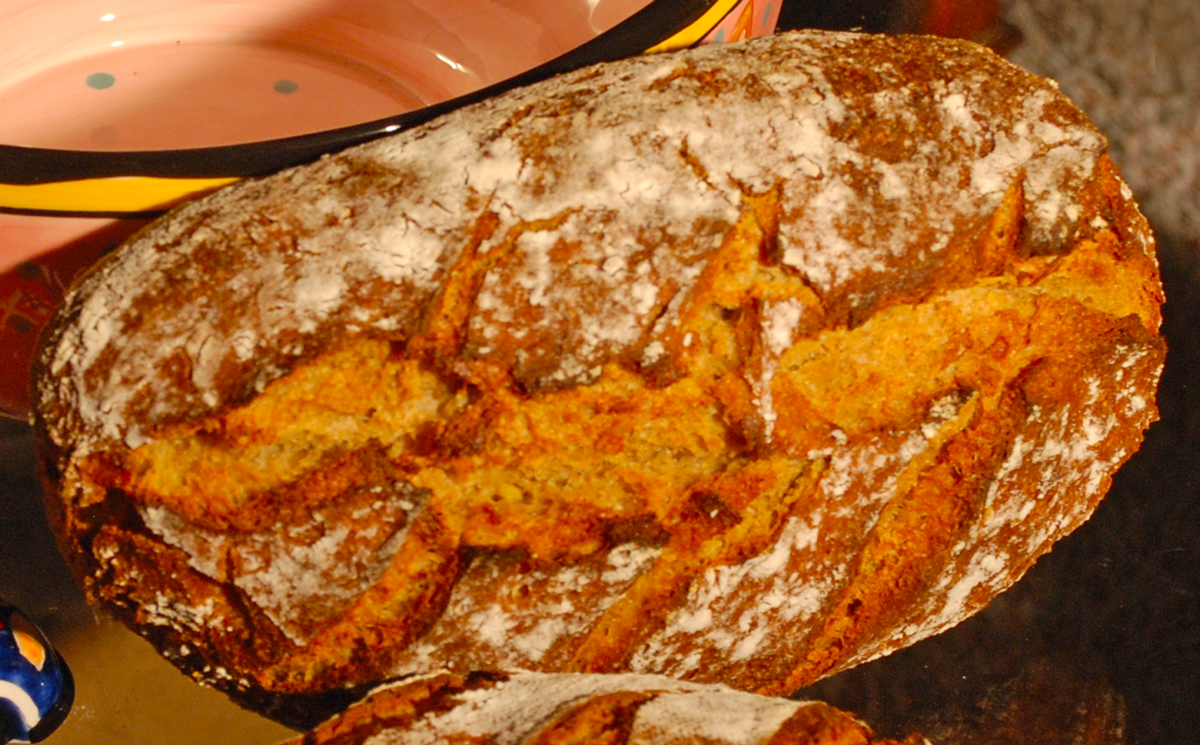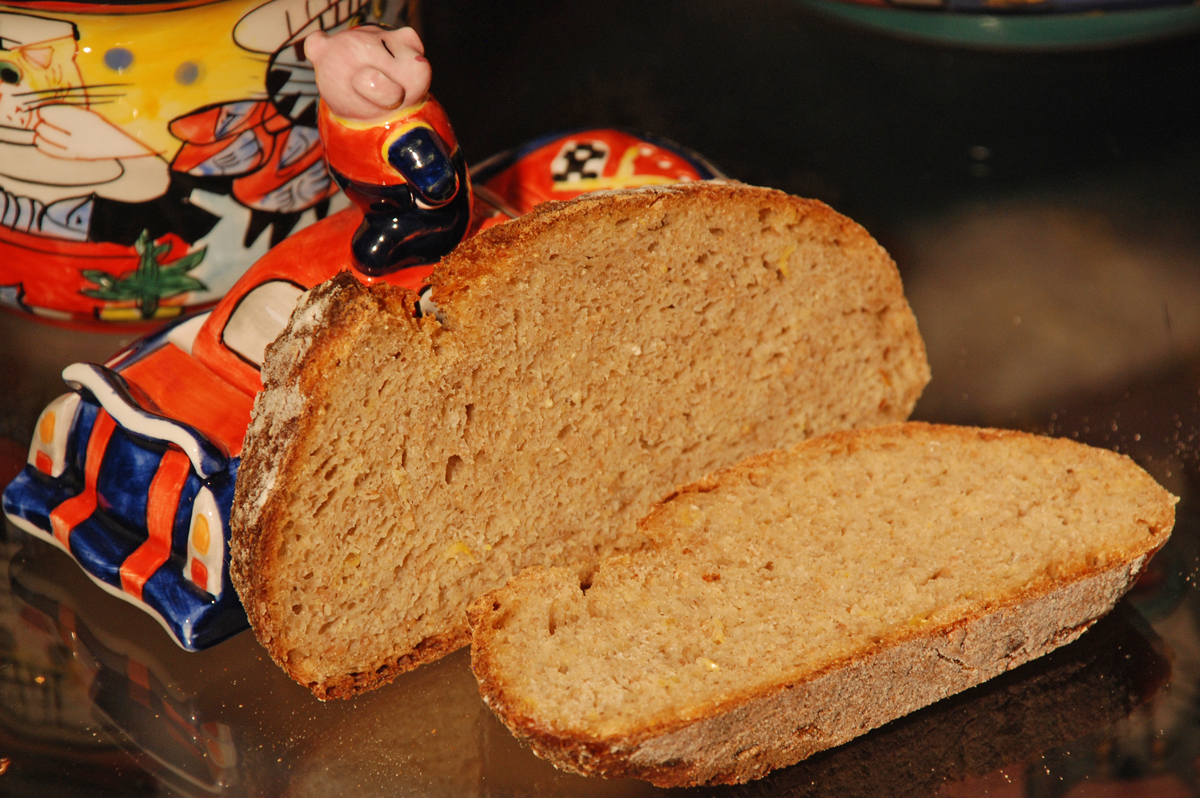 The storm is upon us as I try to write this post before losing power. Hurricane Sandy is set to touch down in a few hours but already the wind is howling and the water is starting to rise over the docks on Long Island.
The storm is upon us as I try to write this post before losing power. Hurricane Sandy is set to touch down in a few hours but already the wind is howling and the water is starting to rise over the docks on Long Island.
I baked this rye bread yesterday in preparation for possibly not having any bread or water for a while. Fortunately it came out as good as I could hope with the addition of a corn slurry added which added some nice moisture to the overall bread.
I built up a yeast water starter using white rye and pumpernickel flour in two builds and also used some of my existing AP sourdough starter as well.
Directions for Yeast Water Levain
Yeast Water Starter Build 1
40 grams White Rye Flour (KAF)
40 grams Pumpernickel Flour (KAF)
80 grams Yeast Water Starter
Mix the flour and Yeast Water in a bowl until thoroughly combined. Cover the bowl and let it sit at room temperature for around 4 hours. The starter should almost double when ready to proceed to build 2.
Build 2
Add ingredients below to starter from above and mix until incorporated. Cover with plastic wrap and let sit at room temperature for 4 hours.
100 grams Pumpernickel Flour
100 grams Yeast Water Starter
Main Dough Ingredients
345 grams Rye Starter from above
80 grams AP Sourdough Levain Refreshed (65% Hydration)
305 grams First Clear Flour (KAF)
75 grams Potato Flour (Bob's Red Mill)
100 grams Pumpernickel Flour (KAF)
85 grams Corn Flour (Bob's Red Mill)
50 grams Rye Chops
141 grams Corn Slurry (1 small can of corn put in food processor for about 30 seconds, water drained before processing)
22 grams Pistachio Oil (You can sub Olive Oil or Vegetable Oil or any nut oil)
18 grams Seas Salt or Table Salt
350 grams Water at Room Temperature
Procedure
Mix the starters (levains) with the water to break them up in your mixer or by hand. Next mix the flours, and rye chops with the starters in your mixer or by hand for 1 minute. Let it rest covered in your bowl for 20-30 minutes. Next add the oil, salt, and the corn slurry mix for 4 minute to incorporate all the ingredients. I mixed on speed #1 for 3 minutes and speed #2 for 1 minutes. The dough should have come together in a ball and will be pretty sticky from the high percentage of rye flour.
Next take the dough out of the bowl and place it an oiled bowl or container. Do a stretch and fold and rest the dough for 30 minutes. After the rest do another stretch and fold and cover the dough and let it rest for 30 minutes. Do one more stretch and fold and let it sit at room temperature covered for 2 hours. After 2 hours you can put the dough into the refrigerator for 24 hours or up to 2 days before baking. Feel free to do some additional S & F's if you feel it is necessary. I baked the bread about 24 hours later.
The next day (or when ready to bake) let the dough sit out at room temperature for 2 hours.
Next, form the dough into your desired shape and put them in floured bannetons, bowls or on a baking sheet and let them rise covered for 2 hours or until they pass the poke test. I used my baker's couche to let the batards rise. Just make sure to not let them over-rise. Note this dough is going to be very sticky so resist the urge to use too much flour just use enough to prevent sticking.
Score the loaves as desired and prepare your oven for baking with steam.


Set your oven for 500 degrees F. at least 30 minutes before ready to bake. When ready to bake place the loaves into your on your oven stone with steam and lower the temperature immediately to 450 degrees. When both loaves are golden brown and reached an internal temperature of 200 degrees F. you can remove them from the oven.
Let the loaves cool down for at least an 3 hours or so before eating as desired.







